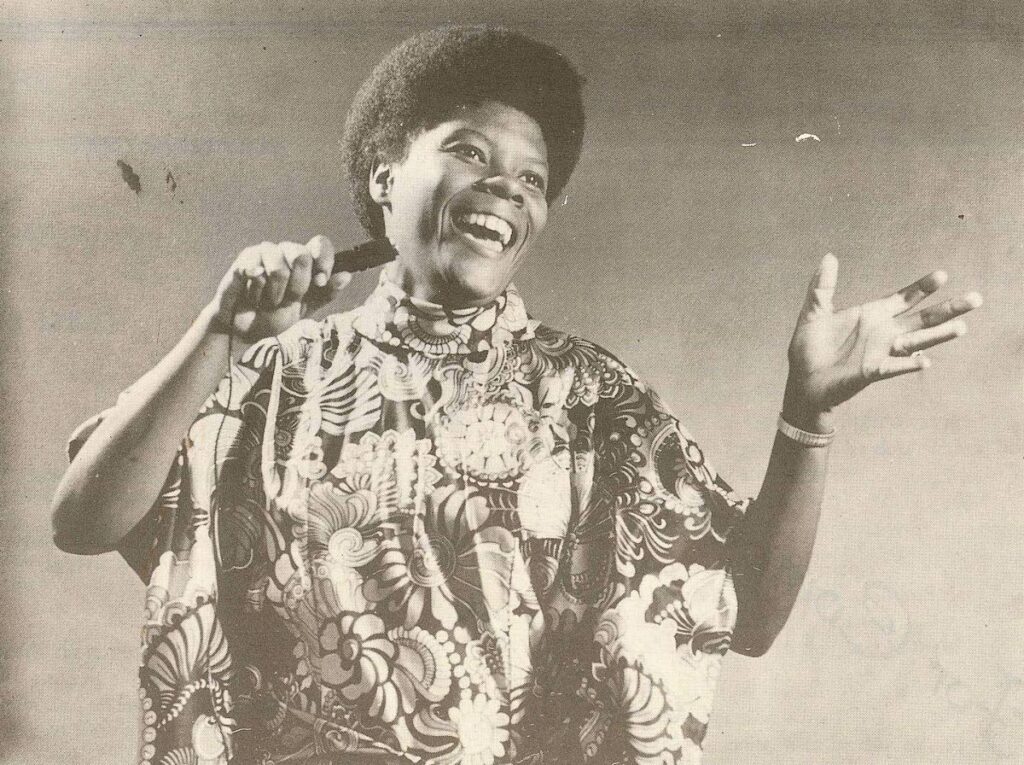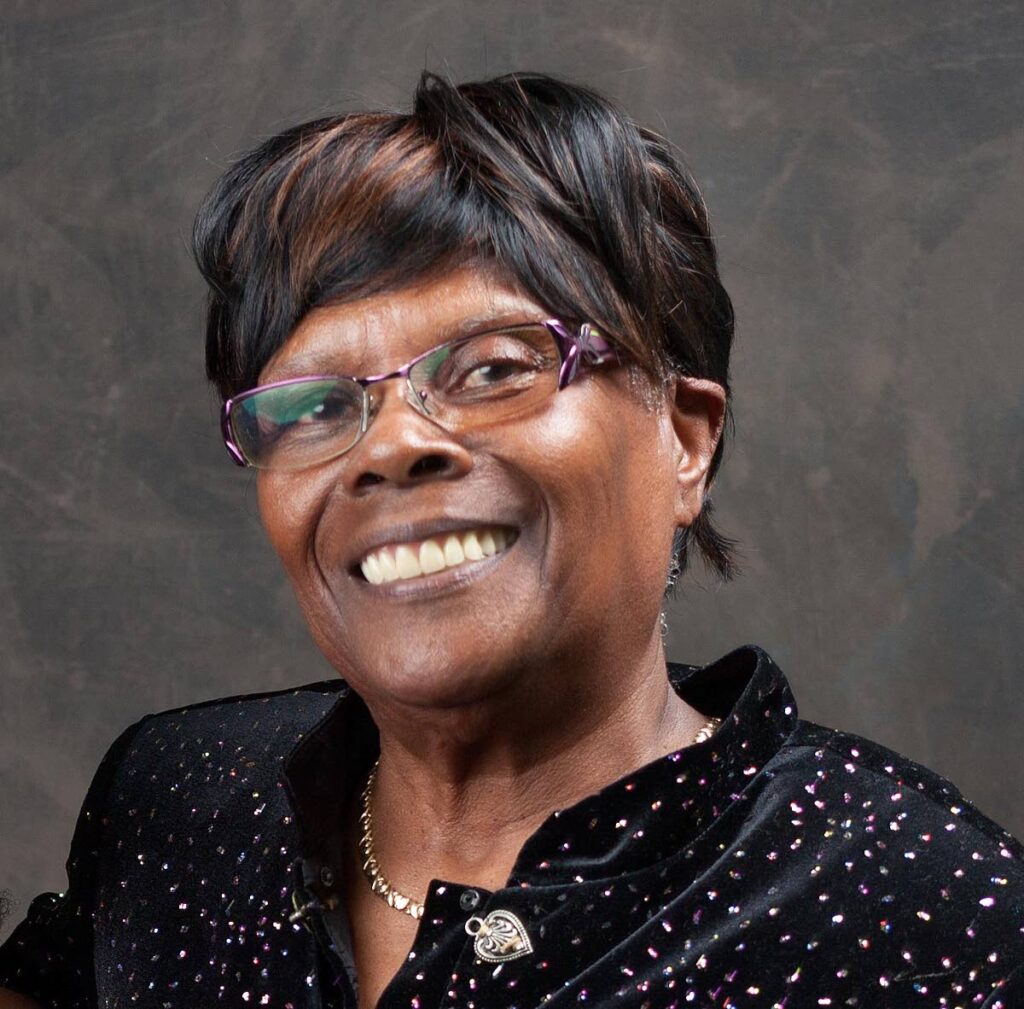Singing Francine: Calypso, soca parang trailblazer

On December 16, 2022, Francine "Singing Francine" Edwards died at her home in New York. On February 6, at a memorial service held at the St Mathias Anglican Church, Barbados, poet and storyteller Miguel Browne was among those who paid tribute to her. The following is an edited version of his eulogy.
The words of Woman’s World, from the 1976 album Yours Truly, epitomise the role that the late Singing Francine played in championing the cause of the female voice in calypsodom.
Outnumbered by her male counterparts, her entry into the calypso arena in 1971 helped to define the era as one in which the female voice fast established itself as equal. And she did just that.
Singing Francine and Calypso Rose (Linda McCartha Monica Sandy-Lewis) were the principal standard-bearers of the movement in the 70s and 80s. One could not mention one name without mentioning the other.
According to Francine, in a 1991 interview, “We dug the foundation and built the bridge across which so many females are crossing today. I am proud of that.”
Singing Francine entered the calypso arena after years of singing chorus in the calypso tents with the popular March of Dimes, led by Nap Hepburn. It was on the urgings of Blakie (Carlton Joseph), who led the Victory Tent, that Francine began her solo career as a calypsonian after he tore up her "chorus contract," in his true warlord style.
Francine’s clear and crisp voice had already taken her to first place in the 1964 Scouting For Talent television series organised by the late Holly Betaudier, singing Never, Never, Never by Shirley Bassey. But that was with ballads, not calypso.
But Blakie was sure Francine was equal to the task. For she also recorded the calypso Bogus Contractors the year before, on the flip side of the ballad When You Get to Phoenix, a reply to Glen Campbell’s hit song, which also made it to the local hit parade. Blakie’s encouragement, with help from Bomber, who wrote her early calypsoes, gave birth to one more calypsonian. The soubriquet of "Singing," given to her by ace arranger and musician Ed Watson, became a template for the many females who answered her call to enter the calypso arena.
Singing Francine quickly carved out a niche for both herself and the female voice. In just her second season in 1972, she sang her way all the way to the Calypso King finals with Carnival Fever and Happiness. She placed third, with only Kitchener (Aldwyn Roberts) and Sparrow (Slinger Francisco) standing between her and the title. In so doing she set the record as the first female to come closest to winning it.
She repeated the feat in 1973 with Mr Carnival and Equal Rights, and in 1975 she broke her own record when she placed second to Kitchener with St Peter Say and It's A Shame, from the pen of Winsford Devines. That April, she won the Calypso King of the World title in St Thomas, US Virgin Islands.
In five seasons Francine proved the female voice was equal to those of her brothers. For her achievements she was awarded the Hummingbird Medal (Silver) in 1975.
Although it was Calypso Rose who became the first female Calypso Monarch, in 1978, Francine’s contribution should never be underplayed. It was her record-breaking performances in 1975 that caused the Carnival Development Committee (CDC) to change the name of the competition from Calypso King to Calypso Monarch in 1976.

Chalkdust (Dr Hollis Liverpool) was TT’s first Calypso Monarch in 1976, not Rose in 1978. Despite the overwhelming evidence, TUCO (Trinbago Unified Calypsonians Organisation) has never given Singing Francine the credit she justly deserves. Instead, TUCO has held tenaciously to the inaccurate narrative that the title change occurred in 1978 as a result of Rose's victory. Repeated so often over the years, this has become gospel truth in many quarters.
asked about the issue, Francine would take it in stride, saying "They crucified Jesus on a cross for speaking the truth, so who am I? You can’t rewrite history. The facts are all there for those who wish to know the truth.”
Courage, confidence and an unswerving faith in God helped her overcome the two major obstacles in her career: being female and not having been born in Trinidad.
Nevertheless, Francine represented this country at the inaugural Carifesta in Guyana in 1972, and sang Sniper’s ( Mervyn Hodge) classic Portrait of Trinidad in some 30 states in the US, as part of the Ambakaila touring team under its late artistic director Aubrey Adams, in the early 1970s and again in 1980.
To those detractors who would continually harp on her Barbadian ancestry, she was particularly firm.
“I was born in Barbados...How can one forget one’s childhood memories?
"But I chose Trinidad as my home. Who chose their home for them? I have neither house nor land in Barbados save the cemetery plot at Westbury where my mother and brothers are buried.”
Although Francine came to Trinidad in 1960 at only 16, some local journalists were unrelenting, punctuating all references to her with the phrase "born in Barbados," as if to convey the subliminal message that she did not belong in Trinidad.
Her reply was always quick. “I belong to the Caribbean…following Mr Carnival wherever he chooses to go…He unites us. So I belong to Antigua, Grenada, St Thomas…You name the island, and I belong.”
In the face of all adversity, Singing Francine just kept on doing what she did best: singing. Whether the calypsoes were written by Bomber, Winsford Devines, Reynold Howard, the Mighty Gabby or herself, she was an expert at rendering them. Francine never had to resort to gimmicks or props to make us listen to her lyrics. The ringing, chiming voice of this pint-sized performer, a mere five-foot-one, could fill even the largest of stages. And her versatile stagecraft never in any way compromised her grace and composure. Lewd or vulgar antics or gestures were never a part of her stage or offstage persona throughout her 51-year calypso career.
She was a born performer. To see her gliding across the stage so effortlessly, and never losing her breath or missing a cue, was an image that will remain etched in the minds of her many fans. The Grandmaster, Lord Kitchener, described her as “a battimanselle in full flight,” while Bill Trotman and Poser (Sylvester Lockhart) were both convinced she was born with “two right feet.”
Singing Francine made it a point to champion the female cause in the calypso arena...And when she was not dealing with female issues, she used her melodious voice to comment on other topical issues.
Outside Carnival, her voice dominated the airwaves at Christmas as well. Long before the advent of Scrunter (Irwin Reyes) as the parang soca king, Hurray Hurrah (1979), Parang Parang (1980) and Ay Ay Maria (1981) became standards. With Reynold Howard as producer and composer, Francine was the first calypsonian to release a full-length parang soca album, Christmas Is Love (1981). And after a three-year collaboration with Howard, she continued producing parang soca albums – Sing Halleuyah Parang (1998) and Merry Christmas from Francine (2009) on the Bonita records label, with her New York-based manager and producer Pauline Caraballo.
Singing Francine was the original parang soca queen. Unlike other calypsonians who incorporated double entendre into their Christmas offering to gain easy appeal and boost their CD sales, Francine remained adamant that the story of Christmas should always remain central.
“Let us keep the artform clean as it is a reflection of us. Sing on the Christmas story and your music will live forever.”
It was a reflection of her deep spirituality, instilled in her formative years at St Matthias Anglican Church and Girls' School, which were the centre of her life before migrating to Trinidad.
Singing Francine may have left us physically, but her music will live on.
Let us hope that at least in death, TUCO could afford her the signal honour she so justly deserves by correcting once and for all the inaccurate narrative spouted for four decades about the name change to Calypso Monarch. As she herself sang in her record-breaking year of 1975, “Noble deeds deserve rewards and I am sure we could afford/to come out and pay tribute/to acknowledge and salute.” Anything less is nothing but “a bloody shame and an insult to Carnival.”
RIP, Singing Francine. Papa God will surely welcome you with open arms for using that beautiful voice with which he blessed you to maximum effect while you walked among us.
-


Comments
"Singing Francine: Calypso, soca parang trailblazer"